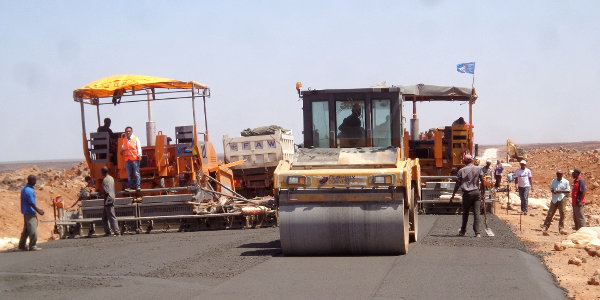A look at the ‘gigantic’ infrastructure project to connect Kenya, South Sudan and Ethiopia
In 2012 Kenya hosted the launch of one of Africa’s largest infrastructure projects – the US$26bn Lamu Port-Southern Sudan-Ethiopia (LAPSSET) transport corridor. The mega project, which will improve transport linkages between Kenya, South Sudan and Ethiopia comprises rail lines, highways, an oil pipeline, resort cities, airports and a port.
LAPSSET is key to Kenya’s ambition to become a middle-income country by 2030.
Silvester Kasuku, CEO of the LAPSSET Corridor Development Authority, describes it as a transformative and “gigantic” project.
“A lot of times people think we are overshooting our own horizon as Kenya. Some people think the African continent is trying to overreach its own potential,” says Kasuku. “[But] there is a realisation beyond just Kenya… that we [have a] tall objective which we must accomplish. The continent is in need of serious modern infrastructure.”
Port and railways
The nerve centre of this ambitious project is a region called Lamu. It is here that Kenya is building a $5bn port that will comprise 32 berths by completion. Lamu Port is expected to help de-congest the current port of Mombasa and improve connectivity to neighbouring landlocked nations. It will, for instance, enable South Sudan – which has been embroiled in disputes with its neighbour Sudan – to export its oil through Kenya, thereby by-passing Sudan’s Red Sea port.
Two high-speed railways, both connecting at the Kenyan town of Isiolo, will be developed. One will be laid from Lamu to Isiolo and then on to South Sudan’s capital Juba. A second railway will connect Nairobi, Isiolo and Ethiopia’s capital Addis Ababa.
The project also includes new road linkages. Some parts of the highway that connects Kenya with Ethiopia have already been completed. Kenya and South Sudan have also concluded feasibility studies for the road between the northern Kenyan town of Lokichar and Juba.
New dawn for the north
Upgraded road and rail networks are anticipated to mark a new dawn for Kenya’s underdeveloped northern region that has been linked with poverty, illiteracy, insecurity and poor infrastructure. Tourist facilities will also be built in the towns of Isiolo and Lamu as well as on Lake Turkana.
Kasuku says LAPSSET will play a key role in transporting machinery and resources such as petroleum, liquefied natural gas, crude oil and industrial agricultural products such as processed livestock and fish.
“The infrastructure that we are building is not just for purposes of importing or doing small business. It is needed for purposes of doing big business, supporting mining and other sectors.”
Security fears
But the threat of insecurity is a concern for some stakeholders. Last year more than 60 people were killed in three attacks in Lamu that the government blamed on “local political networks” despite Somali militant group al-Shabaab claiming responsibility.
In September Kenyan security forces launched an operation to flush out terrorists at Lamu’s Boni forest. Although some residents are demanding more security measures, Kasuku says operations carried out over the last two months have already had a “big impact”.
“We have gone to where they stay, [and] where they operate – and we are dealing with them there… Insecurity will not deter Kenya from taking control of its future.”
In addition to security, LAPSSET also faces a number of other challenges. There have been construction delays due to demands for compensation by landowners. Environmentalists have also raised concerns over the likely impact of the port and other infrastructure on the unique heritage of Lamu, a UNESCO World Heritage site.
But could financing be an even bigger stumbling block to the completion of the project? Kenya has been facing cash flow problems, while China, which has financed multiple infrastructure projects in the region, is facing an economic slowdown.
According to Standard & Poor’s, Kenya’s debt is equivalent to 45% of its gross domestic product and this could rise to 60% by the fiscal year through June 2017.
But Kasuku downplays fears of financing challenges, saying the project is not dependent on taxes collected by Kenyan authorities, instead it will be financed in partnership with the private sector.
“Infrastructure projects of [this] nature are projects that, when bankable, actually support themselves. We don’t have to look at how much tax we have collected,” says Kasuku. “We expect a lot of investors to come on board. We have already seen them making inquiries from time to time and actually putting proposals on the table.”


